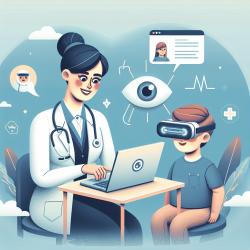Introduction
In the realm of neurosurgical planning, white matter tractography (WMT) has emerged as a pivotal tool, particularly in the context of pediatric therapy. As a practitioner focused on data-driven decisions, understanding and implementing the insights from the research article "White matter tractography for neurosurgical planning: A topography-based review of the current state of the art" can significantly enhance outcomes for children requiring therapeutic interventions.
Understanding White Matter Tractography
White matter tractography involves the visualization of the brain's white matter pathways using diffusion magnetic resonance imaging (MRI). This technique allows for a non-invasive, three-dimensional demonstration of white matter tracts, providing critical information for surgical planning. The research highlights the value of WMT in various neurosurgical settings, emphasizing its role in improving clinical outcomes.
Key Insights from the Research
- Clinical Relevance: WMT is shown to be a valuable tool in neurosurgery, aiding in the planning and execution of procedures by providing detailed insights into the brain's white matter architecture.
- Technical Considerations: The research outlines the importance of understanding technical parameters such as data acquisition, fiber modeling, and expert interpretation to optimize the use of WMT.
- Applications in Pediatric Therapy: For children, WMT can be particularly beneficial in planning interventions for conditions that may affect speech and language development, as it helps in identifying and preserving crucial neural pathways.
Implementing Research Outcomes in Practice
As practitioners, leveraging the insights from this research can lead to more informed decision-making and improved therapeutic outcomes. Here are a few ways to implement these findings:
- Integrate WMT in Therapy Planning: Utilize WMT data to tailor therapy plans that consider the individual neural architecture of each child, ensuring that interventions are both effective and minimally invasive.
- Collaborate with Neurosurgeons: Work closely with neurosurgeons to incorporate WMT findings into surgical planning, particularly for procedures that may impact speech and language pathways.
- Stay Updated with Technological Advances: Keep abreast of the latest developments in WMT technology and techniques to continually refine and enhance therapy practices.
Encouraging Further Research
While the current research provides a comprehensive overview of WMT's applications, there is always room for further exploration. Practitioners are encouraged to contribute to the growing body of research by investigating new applications of WMT in pediatric therapy and sharing findings with the broader medical community.
To read the original research paper, please follow this link: White matter tractography for neurosurgical planning: A topography-based review of the current state of the art.










